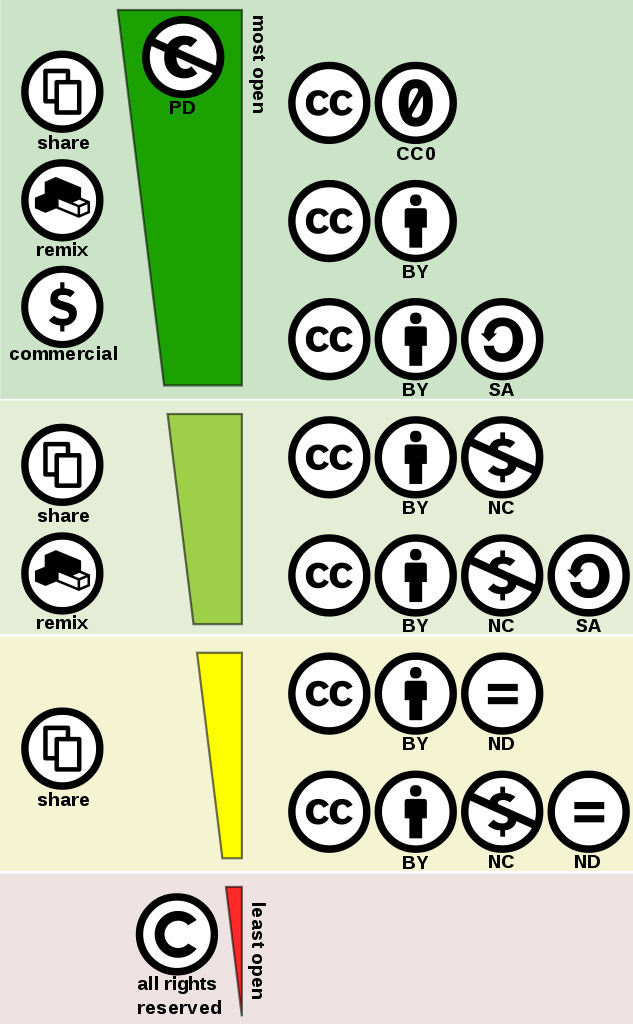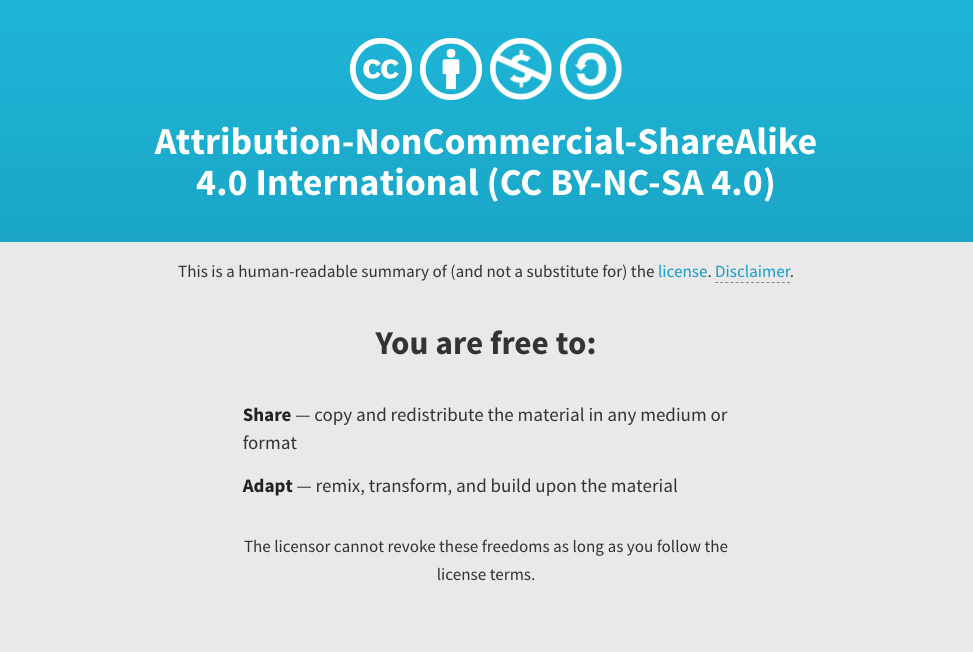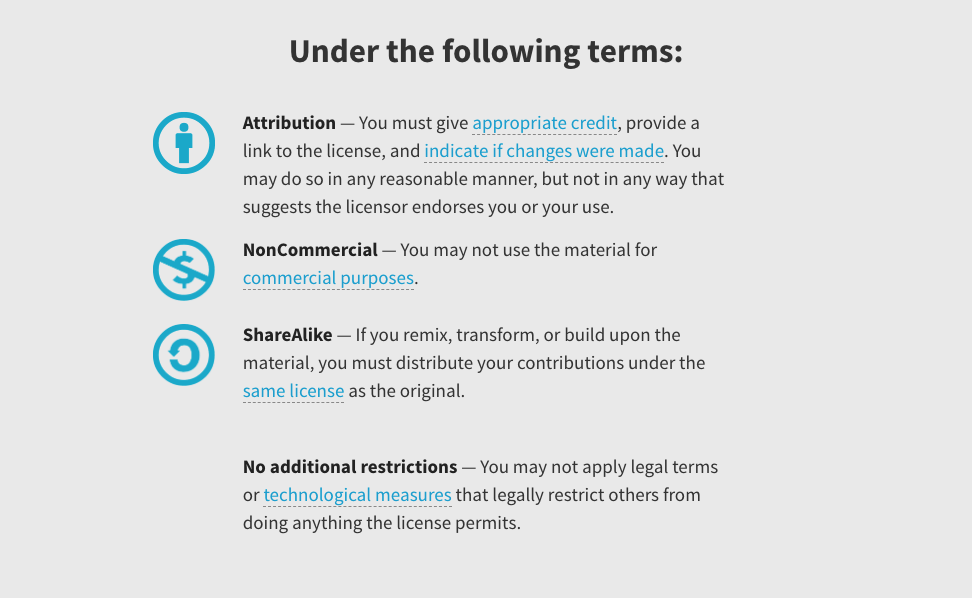IDEA:
I design the machine, the electronics, the schematics, the software and the interface, and open the machine design to the world to build it and use it.

The Creative Commons copyright licenses and tools forge a balance inside the traditional “all rights reserved” setting that copyright law creates. This tools are a standarized way to grant copyright permission to the work you create. With this licence you decide if your content can be copied, distributed, edited, remixed, and built upon within the boundaries of copyright law.
Creative Commons licenses helps creators (licensors) retain copyright while allowing others to copy, distribute, and make some uses of their work, non-commercially. Every Creative Commons license also ensures licensors get the credit for their work they deserve. Every Creative Commons license works around the world and lasts as long as applicable copyright lasts (because they are built on copyright). These common features serve as the baseline, on top of which licensors can choose to grant additional permissions when deciding how they want their work to be used.
Our licenses do not affect freedoms that the law grants to users of creative works otherwise protected by copyright, such as exceptions and limitations to copyright law like fair dealing. Creative Commons licenses require licensees to get permission to do any of the things with a work that the law reserves exclusively to a licensor and that the license does not expressly allow. Licensees must credit the licensor, keep copyright notices intact on all copies of the work, and link to the license from copies of the work. Licensees cannot use technological measures to restrict access to the work by others.

This license lets others distribute, remix, adapt, and build upon your work, even commercially, as long as they credit you for the original creation. This is the most accommodating of licenses offered. Recommended for maximum dissemination and use of licensed materials.

This license lets others remix, adapt, and build upon your work even for commercial purposes, as long as they credit you and license their new creations under the identical terms. This license is often compared to “copyleft” free and open source software licenses. All new works based on yours will carry the same license, so any derivatives will also allow commercial use. This is the license used by Wikipedia, and is recommended for materials that would benefit from incorporating content from Wikipedia and similarly licensed projects.

This license lets others reuse the work for any purpose, including commercially; however, it cannot be shared with others in adapted form, and credit must be provided to you.

This license lets others remix, adapt, and build upon your work non-commercially, and although their new works must also acknowledge you and be non-commercial, they don’t have to license their derivative works on the same terms.

This license lets others remix, adapt, and build upon your work non-commercially, as long as they credit you and license their new creations under the identical terms.

This license is the most restrictive of our six main licenses, only allowing others to download your works and share them with others as long as they credit you, but they can’t change them in any way or use them commercially.

CC0 enables scientists, educators, artists and other creators and owners of copyright- or database-protected content to waive those interests in their works and thereby place them as completely as possible in the public domain, so that others may freely build upon, enhance and reuse the works for any purposes without restriction under copyright or database law.
In contrast to CC’s licenses that allow copyright holders to choose from a range of permissions while retaining their copyright, CC0 empowers yet another choice altogether – the choice to opt out of copyright and database protection, and the exclusive rights automatically granted to creators – the “no rights reserved” alternative to our licenses.

Our Public Domain Mark enables works that are no longer restricted by copyright to be marked as such in a standard and simple way, making them easily discoverable and available to others. Many cultural heritage institutions including museums, libraries and other curators are knowledgeable about the copyright status of paintings, books and manuscripts, photographs and other works in their collections, many of which are old and no longer under copyright. The Public Domain Mark operates as a tag or a label, allowing institutions like those as well as others with such knowledge to communicate that a work is no longer restricted by copyright and can be freely used by others. The mark can also be an important source of information, allowing others to verify a work’s copyright status and learn more about the work.


I design the machine, the electronics, the schematics, the software and the interface, and open the machine design to the world to build it and use it.
People can download the code, the blueprint for the machine, the BOM and buy the parts separately and build it by themselves.
OR
Download the code, the blueprint for the machine, buy all the parts directly from me and assemble it themselves.
OR
I can travel and do the whole process of buying the parts and assembling the machine in any place in the world.
Even when the machine is free to build, the only restriction would be that when using it, it must be connected to my platform to load the data that each one obtains from their own tests with their plants, for data analysis, algorithm optimization and broadening the database worldwide.
The person can access with their user FREE OF CHARGE, only to the data generated by their own research (their plants with their variables and the suggested optimization).
OR
In the future, a MONTHLY FEE may be paid to access the entire plant analysis library that others have made with the machine around the world.
Machine updates, new versions and modifications, will work in the same way as with the initial version.
Blueprints will be opened for each one to buy the materials and do them by themselves.
OR
You will be able buy parts or boards already manufactured or pre ensambled.
OR
They can pay for the materials and modification to be made on site.
Mobirise web page software - Go here